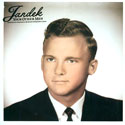 I really do hope that this officially sanctioned seven-inch remix is the start of an avalanche of Jandek reworkings. This inspired idea of placing someone (so wrongly) regarded as unlistenable in a more acceptable modern context is genius.
I really do hope that this officially sanctioned seven-inch remix is the start of an avalanche of Jandek reworkings. This inspired idea of placing someone (so wrongly) regarded as unlistenable in a more acceptable modern context is genius.
Two new shows just for you. We have squeezed out two extended release episodes for this weekend to get you through this week. They contain mostly new songs but there's also new issues from the vaults. The first show features music from Rider/Horse, Mint Field, Robert Aiki Aubrey Lowe, Anastasia Coope, ISAN, Stone Music, La Securite, Bark Psychosis, Jon Rose, Master Wilburn Burchette, Umberto, Wand, Tim Koh, Sun An, and Memory Drawings. The second episode has music by Laibach, Melt-Banana, Chuck Johnson, X, K. Yoshimatsu, Dorothy Carter, Pavel Milyakov, Violence Gratuite, Mark Templeton, Dummy, Endon, body / negative, Midwife, Alberto Boccardi, Divine. Cow in Maui from Veronika in Vienna. Get involved: subscribe, review, rate, share with your friends, send images! |



 Black One does exactly what is expected from a Sunn O))) record, it drones and feedbacks like a reliable fiend. While it’s nothing groundbreaking in terms of an evolution of their sound, it does provide some subtle new twists on their trademarked detuned riffing.
Black One does exactly what is expected from a Sunn O))) record, it drones and feedbacks like a reliable fiend. While it’s nothing groundbreaking in terms of an evolution of their sound, it does provide some subtle new twists on their trademarked detuned riffing. Jason Molina will never be accused of holding back. Through the years as Songs: Ohia and The Magnolia Electric Co, he has proven himself over and over again to be both a prolific songwriter and tireless performer, churning out a stream of excellent albums and perpetually on the road for what seems like 13 months of the year.
Jason Molina will never be accused of holding back. Through the years as Songs: Ohia and The Magnolia Electric Co, he has proven himself over and over again to be both a prolific songwriter and tireless performer, churning out a stream of excellent albums and perpetually on the road for what seems like 13 months of the year.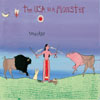 This is the sound of a thrash band sent into the bush andforced to beat their way out with twigs. Everything here, from the warbled acoustic pickin’ to the LightningBolted two-note spasm ascensions, is worn with a genuine conviction, theprimacy of frayed roots, dirty levity and the private knowledge that endurance isgod in this new landscape.
This is the sound of a thrash band sent into the bush andforced to beat their way out with twigs. Everything here, from the warbled acoustic pickin’ to the LightningBolted two-note spasm ascensions, is worn with a genuine conviction, theprimacy of frayed roots, dirty levity and the private knowledge that endurance isgod in this new landscape.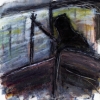 On previous albums, Do Make Say Think played their own blend ofpsych-rock with jazz influence in an effort to explore the stars andplanets, drifting off into their own orbit. Occasionally, as on theirlast album, they got so close to the stars that they brought back somedust here and there, or they gathered sunlight and a planet'satmosphere through which to project their instrumental structures,resulting in a fluid and pleasant listen. For their fourth album,however, they've created a work of true beauty, as though they'velanded on a new planet they can finally call their own. Winter Hymn Country Hymn Secret Hymnis best listened to as a whole, or on vinyl where it is split intothree thematic parts. Overall the album is a step more towardscohesion, with every song blending into the next and creating animmersive feel. Structurally, the parts of the record are separated bytheir slight differences, with the first area covering blending guitarwork, the second infusing more horns for flavor, and the last sectionbleeding into sliced structures with effects and dischordant cacaphony.Ultimately, it all gives way to the hymnal "Hooray! Hooray! Hooray!,"with full organ computer glitch wonder and western guitar with afterschool chorale. It's as though the experience and different sides ofthe band—sometimes warring for control before or finding their way outonly here and there#151;are now one, omniscient and comfortable,allowing for a full, varied, and complex sound that covers a lot ofground and never sounds disjointed. Every song tells a story, turnspage after page, building to a truly bright and vibrant climax thatwhen finally reached makes the whole journey seem all the moreworthwhile. Do Make Say Think are growing into themselves with everyrelease, and their latest shows a comfort and complacence that can onlyserve them well in the future.
On previous albums, Do Make Say Think played their own blend ofpsych-rock with jazz influence in an effort to explore the stars andplanets, drifting off into their own orbit. Occasionally, as on theirlast album, they got so close to the stars that they brought back somedust here and there, or they gathered sunlight and a planet'satmosphere through which to project their instrumental structures,resulting in a fluid and pleasant listen. For their fourth album,however, they've created a work of true beauty, as though they'velanded on a new planet they can finally call their own. Winter Hymn Country Hymn Secret Hymnis best listened to as a whole, or on vinyl where it is split intothree thematic parts. Overall the album is a step more towardscohesion, with every song blending into the next and creating animmersive feel. Structurally, the parts of the record are separated bytheir slight differences, with the first area covering blending guitarwork, the second infusing more horns for flavor, and the last sectionbleeding into sliced structures with effects and dischordant cacaphony.Ultimately, it all gives way to the hymnal "Hooray! Hooray! Hooray!,"with full organ computer glitch wonder and western guitar with afterschool chorale. It's as though the experience and different sides ofthe band—sometimes warring for control before or finding their way outonly here and there#151;are now one, omniscient and comfortable,allowing for a full, varied, and complex sound that covers a lot ofground and never sounds disjointed. Every song tells a story, turnspage after page, building to a truly bright and vibrant climax thatwhen finally reached makes the whole journey seem all the moreworthwhile. Do Make Say Think are growing into themselves with everyrelease, and their latest shows a comfort and complacence that can onlyserve them well in the future.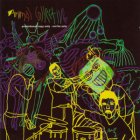 Fat Cat's reissue of the first two Animal Collective releases on one double-disc should not only come as a pleasant surprise to those who discovered the group with this year's excellent Here Comes The Indian, but should also raise the question why it took almost 4 years for the Brooklyn-based project to be courted by a large label. Created by and originally credited to only two Animal Collective members, Spirit They've Gone, Spirit They've Vanished was self-released on Animal Records in 2000.
Fat Cat's reissue of the first two Animal Collective releases on one double-disc should not only come as a pleasant surprise to those who discovered the group with this year's excellent Here Comes The Indian, but should also raise the question why it took almost 4 years for the Brooklyn-based project to be courted by a large label. Created by and originally credited to only two Animal Collective members, Spirit They've Gone, Spirit They've Vanished was self-released on Animal Records in 2000.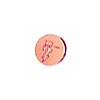 Black Dice is an entirely different proposition from the legions ofretro-disco and post-punk derivatives, and it is tempting to wonderjust what they're doing on a label like DFA. The easy answer is thatthey are excellent, and Murphy and Goldsworthy are able to recognizebrilliance, even when it comes in a package as noisy and uncommercialas Black Dice's Beaches and Canyons."Cone Toaster" is decidedly more rhythmic than much of the material onthat LP, but it still can't qualify as dance music, unless we'retalking about free-PCP night at the Mindfuck Discoteque. Black Dice'sheavy, psychedelic abrasiveness is informed by the krautrock of Can,the tribal Japanoise of The Boredoms and the punk-metal bombast of BigBlack. "Cone Toaster" is a mind-scraping gallery of atonal scrapings,polyrhythms, echo-chambered chanting and gloriously unhinged accidentsof improvisation. The b-side is a remix of the album track "EndlessHappiness" by Yamatsuka Eye (from The Boredoms) which remakes the songinto a hyperspeed hallucinogenic tribal-house track that wouldn't soundout of place of Eye's terrifically odd DJ Pica Pica Pica Planetary Love Gasmix CD. Eye takes the strange tactic of adding a more-or-less danceablebeat, sonically perverting the guitar and basslines into a cacophony ofshimmering protoplasm while adding the usual galaxy of chimes, whistlesand birdcalls that define his singularly whimsical and chaoticpunk-psych. This 12" is one of the most consistently enjoyable plattersof avant-garde lunacy released this year.
Black Dice is an entirely different proposition from the legions ofretro-disco and post-punk derivatives, and it is tempting to wonderjust what they're doing on a label like DFA. The easy answer is thatthey are excellent, and Murphy and Goldsworthy are able to recognizebrilliance, even when it comes in a package as noisy and uncommercialas Black Dice's Beaches and Canyons."Cone Toaster" is decidedly more rhythmic than much of the material onthat LP, but it still can't qualify as dance music, unless we'retalking about free-PCP night at the Mindfuck Discoteque. Black Dice'sheavy, psychedelic abrasiveness is informed by the krautrock of Can,the tribal Japanoise of The Boredoms and the punk-metal bombast of BigBlack. "Cone Toaster" is a mind-scraping gallery of atonal scrapings,polyrhythms, echo-chambered chanting and gloriously unhinged accidentsof improvisation. The b-side is a remix of the album track "EndlessHappiness" by Yamatsuka Eye (from The Boredoms) which remakes the songinto a hyperspeed hallucinogenic tribal-house track that wouldn't soundout of place of Eye's terrifically odd DJ Pica Pica Pica Planetary Love Gasmix CD. Eye takes the strange tactic of adding a more-or-less danceablebeat, sonically perverting the guitar and basslines into a cacophony ofshimmering protoplasm while adding the usual galaxy of chimes, whistlesand birdcalls that define his singularly whimsical and chaoticpunk-psych. This 12" is one of the most consistently enjoyable plattersof avant-garde lunacy released this year.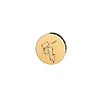 DFA's newest release is a split 12" single. The Juan Maclean's track isa seamlessly realized disco-house anthem that sounds every bit as goodas one of the circa-1980 Larry Levan and Arthur Russell classic Paradise Garagebangers. "Give Me Every Little Thing" is perfect music for a crowdedBrooklyn nighspot on a hot summer night, with its sophisticateddowntown grooves and an r&b-inflected chorus. The Rapture's side isan energetic slab of raw punk-funk with the typically strained vocaldelivery, this time ring-modulated and covered up with a denseproduction that includes atmospheric keyboard swells and a tickingtime-bomb beat. "1, 2, 3, 4, Kick that fucker out the door!" screamsJenner, as the song kicks into electro-house gear. This track is takenfrom The Rapture's forthcoming full-length LP Echoes, and theirsound is gradually becoming more unique and tough to pin down; aconfoundingly addictive combination of post-punk, goth, disco and funkelements.
DFA's newest release is a split 12" single. The Juan Maclean's track isa seamlessly realized disco-house anthem that sounds every bit as goodas one of the circa-1980 Larry Levan and Arthur Russell classic Paradise Garagebangers. "Give Me Every Little Thing" is perfect music for a crowdedBrooklyn nighspot on a hot summer night, with its sophisticateddowntown grooves and an r&b-inflected chorus. The Rapture's side isan energetic slab of raw punk-funk with the typically strained vocaldelivery, this time ring-modulated and covered up with a denseproduction that includes atmospheric keyboard swells and a tickingtime-bomb beat. "1, 2, 3, 4, Kick that fucker out the door!" screamsJenner, as the song kicks into electro-house gear. This track is takenfrom The Rapture's forthcoming full-length LP Echoes, and theirsound is gradually becoming more unique and tough to pin down; aconfoundingly addictive combination of post-punk, goth, disco and funkelements. The air is thick, muggy, and full of nervous chatter. The congregationfinds their seats with the help of ushers dressed in black suits,polite in their assistance and insistence that the growing crowd findtheir seats. The tent is makeshift at best, made from old bed sheetsand a few cracks in the seams are visible to those who look above. Noone is sure what to expect. They've heard the tales of this newminister and his new gospel, but they are apprehensive, perhaps even alittle frightened at the prospect. Then, suddenly, the lights dim, andthe stage explodes with horns, guitar, bass, and heavy percussion. Asthe lights restore the minister sings, no, howlsthe sermon with a boogie that is just shy of satanic, and thecongregation can't help but rise to their feet and join in with theminimal choir that accompanies him. Casey Meehan is that minister, andhis songs aren't the old or new testament, but they are lessons for theweak nonetheless. He sings of being baptised, of being born again, andwith titles like "Who Will Be Saved?" and "Do Right" his mission isclear. He may not be of a formal religion, but he is here to shepherdthe meek through the valley, and he will do so with a bit of Dixie, abit of Storyville, New Orleans, and a lot of moxy and sensual vocalprowess reminiscent of Mark Sandman and Greg Dulli. These songs are thelessons of a man who has been through it all, who sees the masks we allput on and who wants to shatter them, hurling a reality with the forceof a fastball; and like any good evangelist he has sinned as much asthose he tries to save. His band, the Delta Still, are a tight, fierceensemble, and the songs are punishing in places and delicate in others:whatever it takes to get the message out right. The instrumentals aremassive, and through it all Meehan carries the weight with ease, sexingthe microphone for all its worth. For his first record, Meehan isshooting out of the gate, heading down the track at full speed. Catchhim if you can.
The air is thick, muggy, and full of nervous chatter. The congregationfinds their seats with the help of ushers dressed in black suits,polite in their assistance and insistence that the growing crowd findtheir seats. The tent is makeshift at best, made from old bed sheetsand a few cracks in the seams are visible to those who look above. Noone is sure what to expect. They've heard the tales of this newminister and his new gospel, but they are apprehensive, perhaps even alittle frightened at the prospect. Then, suddenly, the lights dim, andthe stage explodes with horns, guitar, bass, and heavy percussion. Asthe lights restore the minister sings, no, howlsthe sermon with a boogie that is just shy of satanic, and thecongregation can't help but rise to their feet and join in with theminimal choir that accompanies him. Casey Meehan is that minister, andhis songs aren't the old or new testament, but they are lessons for theweak nonetheless. He sings of being baptised, of being born again, andwith titles like "Who Will Be Saved?" and "Do Right" his mission isclear. He may not be of a formal religion, but he is here to shepherdthe meek through the valley, and he will do so with a bit of Dixie, abit of Storyville, New Orleans, and a lot of moxy and sensual vocalprowess reminiscent of Mark Sandman and Greg Dulli. These songs are thelessons of a man who has been through it all, who sees the masks we allput on and who wants to shatter them, hurling a reality with the forceof a fastball; and like any good evangelist he has sinned as much asthose he tries to save. His band, the Delta Still, are a tight, fierceensemble, and the songs are punishing in places and delicate in others:whatever it takes to get the message out right. The instrumentals aremassive, and through it all Meehan carries the weight with ease, sexingthe microphone for all its worth. For his first record, Meehan isshooting out of the gate, heading down the track at full speed. Catchhim if you can.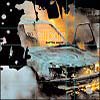 Here is another electronic, beat-based album that plays the game of "Ilove it/I hate it." The atmosphere is mostly dark, the beats thick andchugging, and the melodies somehow buried inside walls of static noiseand time-warped samples. There's the first problem: sometimes themelodies never get a chance to come out and play. As a result, I'm leftlistening to a somewhat boring, somewhat repetitive drum track thatdoesn't have the power to carry the song by itself. Unfortunately, thealbum is produced in such a way that each song inevitably has someincredible sounds on it but they're completely attenuated by the waythey're thrown into the backgroud and lost beneath a plethora ofeffects. But then, amazingly, all that wishy-washy noise comes togetherfor a few brief moments and gives birth to an explosion that comesclose to relieving the tension and weariness of the first few minutesof the song. This is how "Flesh Wound" opens up the album and it seguesinto the infinitely more entertaining "Gargantuan." I imagine one ofthose dolls that has a slinky for a neck bopping around to this rubberyand dynamic wall of beats only to have a stick of dynamite send it intothe great beyond. "Gargantuan" has nearly the same production style as"Flesh Wound," but manages to pull it off by allowing the repeatingdrum and melody patterns to weave a bit more intricate and diverse bodyof sound. "Boiled In Blood" is a bit more low-key than anything else onthe album and it provides a nice break from the havoc of the first twotracks. It unfortunately gives way to more standard four-on-the-floordance music that sounds horribly distorted and only covers up whatseems to be the most interesting elements dying in the background. Andso this process continues throughout the duration of Don't Be Scared.I either love it or I hate it. Not much changes in terms of production:it's all pretty muddy and eventually this makes the entire album feelfar too homogenous. The formula either works for some of the songs orit doesn't. This up and down experience ends up making the whole albumfeel dull; it's just hard to sit down and listen to the whole thing allthe way through.
Here is another electronic, beat-based album that plays the game of "Ilove it/I hate it." The atmosphere is mostly dark, the beats thick andchugging, and the melodies somehow buried inside walls of static noiseand time-warped samples. There's the first problem: sometimes themelodies never get a chance to come out and play. As a result, I'm leftlistening to a somewhat boring, somewhat repetitive drum track thatdoesn't have the power to carry the song by itself. Unfortunately, thealbum is produced in such a way that each song inevitably has someincredible sounds on it but they're completely attenuated by the waythey're thrown into the backgroud and lost beneath a plethora ofeffects. But then, amazingly, all that wishy-washy noise comes togetherfor a few brief moments and gives birth to an explosion that comesclose to relieving the tension and weariness of the first few minutesof the song. This is how "Flesh Wound" opens up the album and it seguesinto the infinitely more entertaining "Gargantuan." I imagine one ofthose dolls that has a slinky for a neck bopping around to this rubberyand dynamic wall of beats only to have a stick of dynamite send it intothe great beyond. "Gargantuan" has nearly the same production style as"Flesh Wound," but manages to pull it off by allowing the repeatingdrum and melody patterns to weave a bit more intricate and diverse bodyof sound. "Boiled In Blood" is a bit more low-key than anything else onthe album and it provides a nice break from the havoc of the first twotracks. It unfortunately gives way to more standard four-on-the-floordance music that sounds horribly distorted and only covers up whatseems to be the most interesting elements dying in the background. Andso this process continues throughout the duration of Don't Be Scared.I either love it or I hate it. Not much changes in terms of production:it's all pretty muddy and eventually this makes the entire album feelfar too homogenous. The formula either works for some of the songs orit doesn't. This up and down experience ends up making the whole albumfeel dull; it's just hard to sit down and listen to the whole thing allthe way through.
